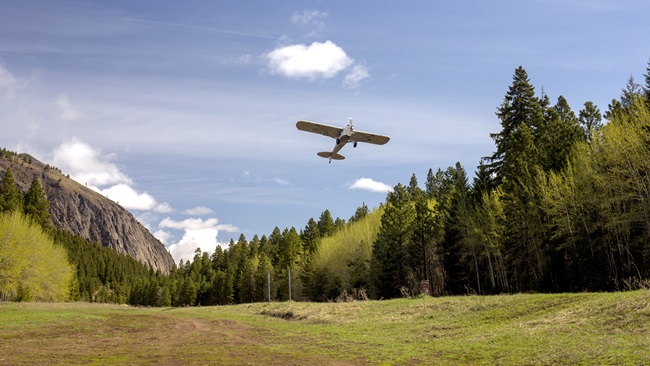Gotta go around
When you know the landing is not going well
By William Steinmetz
The winds aloft at 4,500 feet were moderately strong out of the south, which made the trip to Prickett-Grooms Field (6Y9) from Menomonie, Wisconsin, a short one, but it would require a 90-degree crosswind landing on a 2,600-foot east-west runway with tall trees off both ends.

I knew from experience that the runway environment created shear-like conditions on windy days. As I approached from the south, I initially set up to enter the pattern on left base, but decided this was sloppy at a field full of pilots and changed to a standard 45-degree entry onto downwind.
My groundspeed was more than 130 knots with the strong south wind and by the time I got established on downwind, I was almost directly over the field. I angled my flight path out somewhat to gain some space as I called downwind on the CTAF. I turned on base and kept the turn going for the final approach but when I raised the wing, I had overshot it by quite a lot. I should have just gone around at that point, but instead I added some throttle, attempting to rejoin the final approach and salvage the landing and maybe my pride too.
As I cleared the trees and descended into the landing flare, I sensed that I was going too fast and quickly using up runway. Just before the halfway point, I shoved in the throttle, arrested the descent, and instinctively reached over to raise the flaps part way.
The flaps in my 172 are electric with an up/down switch, no detents. The gross weight increase supplemental type certificate restricts full flaps to 30 degrees. I knew I didn’t want to leave them at 30 but also didn’t want my head inside the cockpit looking at the panel while so low to the ground with a windscreen full of rapidly approaching trees. I held the switch up to raise some of the flaps, and the aircraft settled enough to give me a jolt of adrenaline. I began an anemic climb and headed for a missing spot in the trees where a road exited out the back, like a few missing teeth in a snarling mouthful of green. My wings cleared the trees by no more than 10 feet. It was all over in the blink of an eye. I felt grateful to still be flying and as I climbed out, I saw the flaps were at 10 degrees and the carb heat was still on.
I began an anemic climb and instinctively headed for a missing spot in the treesOf all the maneuvers we practice for a checkride, go-arounds are rarely needed in real life and rarely practiced. I knew from using flaps during soft-field departures that my airplane settled when raising the flaps, but I hadn’t done a real go-around in tight conditions like that, maybe ever. I found in my pilot’s operating handbook afterward that the recommended balked landing procedure is full power, flaps 20, upon reaching a safe airspeed retract remaining flaps. No mention of carb heat, which I have been using religiously on downwind since I learned to fly in the 1970s.
I went out recently at my home airport to practice go-arounds. I also practiced how long to hold the switch for the desired flap setting, which is critical since you need your head outside the cockpit during a go-around. I’m still going to pull the carb heat on opposite the numbers on downwind, but from now on, I’m going to push it back in on short final. Be “go-around aware” at shorter, more hazardous airfields especially if a go-around is not possible past a certain point. Have a point in your head where you need to be touching down with enough runway to stop. And if you sense the landing is not going well, go around sooner rather than later.
 Make the call
Make the call

